| Zeitschrift Umělec 2001/4 >> Art Is as Simple as Mooning | Übersicht aller Ausgaben | ||||||||||||
|
|||||||||||||
Art Is as Simple as MooningZeitschrift Umělec 2001/401.04.2001 Anatolij Osmolovskij | profil | en cs |
|||||||||||||
|
"The Russian painters Alexandre Dubosarsky and Vladimir Vinogradov began collaborating in 1994. Before that time Dubosarsky had been known as one of the most active artists in the Tryokhprudny Gallery, which under the supervision of Avdei Ter-Oganian maintained a constant intensity of exhibition activity. Its weekly exhibitions/actions captured the attention of the Moscow art scene for more than two and a half years. However in 1993 the gallery terminated its activity and the art circle evaporated, with each participant forced to find his own way in the world of contemporary art.
While Dubosarsky was exhibiting in Tryokhprudny Alley, his friend and future partner Alexandre Vinogradov was graduating from the Surikov Institute. The knowledge and abilities he gained there were instrumental mainly for the practicalities of their joint projects. This was the only known case of traditional Soviet painting methods and aesthetics entering the context of contemporary art in the 1990s. In 1994 the Moscow scene was marked by the appearance of radical art (sometimes also referred to as Moscow actionism), which in time achieved unprecedented recognition. Radical art — performances taken to the limits of aggression and brutality — was at this time the most significant and popular artistic method to communicate with society. From the first actions at the end of 1989, radical art began to clash with the Moscow conceptualist circle, which had appeared under the Soviet regime. Despite the fact that interest in esoteric conceptualism was declining in the early 1990s, the group’s influence persisted in the context of Moscow art. These three conditions (the decline of the collective project in the Tryokhprudny Gallery, the rise of radical art and the preserved infrastructure of Moscow conceptualism) became the contextual basis for the new project by Vinogradov and Dubosarsky. Commissioned Paintings was the title of their most successful exhibition, and the name reveals the central meaning of the project. Vinogradov and Dubosarsky set aggressive radical actions and esoteric conceptualism against the traditional aesthetics of socialist realism. An atmosphere of misunderstanding hampered the project right from the start. The paintings, with their allusions to ancient mythology, led critics to point out what they identified as the artists’ infantile or revivalist intentions. However Vinogradov and Dubosarsky’s paintings expressed a different, albeit equally aggressive, side of radical art. What united them with other radical artists was the desire to make art that was “as simple as mooing.” Vinogradov and Dubosarsky’s genre of choice is the monumental painting, which is capable of overpowering the audience with its size and colors, and the amount of work invested by the artists. That they employed the discredited aesthetics of socialist realism shocked the art community no less than other radical performances. Furthermore, painting as a method of conveying a message is comprehensible to anybody. But unlike the radicals who set out to create images of the anti-hero, the anarchist terrorist and the provocateur, Vinogradov and Dobosarsky were attempting to take the place of positive heroes from the post-perestroika era in Russia. One of their main principles lay in the synthesis of the new Russian style, which did nothing to challenge the sensibilities of the mass consumer but still provoked confusion within the art world (confusion being a prime form of interest). In the context of the total decline of traditional schemes of interpretation, as well as total economic, social, and political instability, such confusion could only be achieved with a simple, comprehensible gesture. And achieve it they did. Take, for example, the article written by Moscow critic Ekaterina Dyogot on Vinogradov and Dubosarsky’s exhibition Russian Literature in which she offered four possible, but at the same time contradictory, interpretations of their work. Critics fumbled around in the dark, asking: What is this? Another whiff of Sots Art, but under different social conditions? An apology for the new Russian state? New aestheticism or simulation? Intellectual infantilism, weirdness or intentional demonic possession? In my opinion, all of these interpretations are equally probable in that none of them reflects the complicated and contradictory intentions of Vinogradov and Dubossarsky, but each represents the spontaneous and schizophrenic reality in post-perestroika Russia. “For:” the Technique of Communication With the development of mass media the principle of painting consumption has changed significantly. In the 19th century the main conditions in which a painting could be perceived was a visit to exhibition spaces: galleries or museums. Today, a painting typically functions as the physical form of a visual image that can be endlessly reproduced in various media. Moreover, the success of a painting in the art market is guaranteed by the extent to which the visual image is replicated and distributed — which is something Vinogradov and Dubosarsky understand perfectly. Their main efforts are therefore not focused on the perfection of their brushwork but on the integration of their visual images into society, a goal vividly illustrated by the formula of their series Paintings for... (in which pictures were created for prisons, industrial plants, factories and tourist agencies). This desire to satisfy public expectations underscores how little emphasis should be given to the mythology of their images. If any critical intention exists in this project, it is achieved, oddly enough, through the artists’ unprincipled conformity: Society can only really enjoy tamed contemporary art, but for an artist to behave like a slave to society implies criticism of it. Pop Art used this method first, but the pinnacle of cynical collusion was achieved by the American simulationists (Jeff Koons, Haim Steinbach, Ashley Bikkerton and others). It seems clear that Vinogradov and Dubosarsky employ a very similar approach to the simulationists’: They are not making paintings but the paintings’ simulacra. Vinogradov and Dubosarsky’s art is very often compared to Sots Art. Everybody forgets, however, that Sots Art was extremely critical and ironic. Only one Sots Art picture, Krasikov Street by Eric Bulatov, can be compared to their work, this having been the first picture in the Russian art context to demonstrate Pop Art methods of contradiction (and, in my opinion, the most noteworthy work of Sots Art). Radical artists of the 1990s forgot the experience of Pop Art and simulation, and retreated to the classic avant-garde position of “enfants terribles,” thereby losing much of their effectiveness. In that sense Vinogradov and Dubosarsky represent knowledge of other, more advanced methods of critical communication with society than those of the classic avant-garde. The weakness of Alexander Brener’s pathos, for instance, lies in his attempts to hide one quite important detail: that negativity can indeed be integrated and bought. In fact, the history of the avant-garde illustrates this point perfectly, and I think that two particular cultural revolutions will be important in the next century: punk and simulationism. If punk has synthesized maximum negativity, having copied it for mass consumption (incorporating the experience of the situationists, Dadaists and others), simulationism has shown the other side of that negativity. The rejection of these achievements leads to the stagnation of thought, to the repetition of past illusions. The art of Vinogradov and Dubosarsky, on the other hand, despite the skeptical attitude of various critics, opens up those internal mechanisms that typically result in the integration of contemporary art into the mainstream, and it represents the ongoing development of simulationism. Expulsion from “Paradise” Vinogradov and Dubosarsky’s “Fall” began with their rejection of a distinct critical position, a shortcoming which steered conceptual critics raised on the aesthetics of Sots Art away from their project. Vinogradov and Dubosarsky had broken the number one rule of the conceptualist: “being in.” In the discourse of Moscow conceptualism, that slangy phrase meant a set of relations to society: a sideways ironic gaze, the conscious manipulation of mass cultural images, an interest in various types of asocial Eastern philosophies. “Not being in” means not dissolving in society but rather taking the external side, the so-called meta-position, a stance that led Monastirsky to compare conceptualists to David Livingstone, that famed investigator of and missionary to the African tribes. The main desire of the artists of the 1990s, on the other hand, was to “be in” something, and their tendency to minimize the distance between the artist’s consciousness, his or her art production and society was the basis of the conflict between the radicals and the conceptualists. In this context, the position taken by Vinogradov and Dubosarsky, neither going native nor acting as objective spectator-inspectors, was quite exotic. The main difference between their art production and the artifacts made by radical artists might best be explained in their choice of audience. Mass Media Performance: The Picture as an Integrated Image The title of Vinogradov and Dubosarsky’s exhibition, Commissioned Paintings, was more a declaration of intent than a statement describing a real state of things. Of course Vinogradov and Dubosarsky had not received any orders for paintings. Just as the title Paintings for… did not mean that their images had been requested, but they instead represented a suggestion for cooperation and a demonstration of the possibilities. They cast all those “fors” around like baited hooks and simply waited for bites. Finally, they got one. In 1995 Vinogradov and Dubosarsky painted Happy Day for their Berlin exhibition called Painting for Reichstag. This was their most successful and spectacular picture to date and was dedicated to the unification of Germany. The monumental canvas (400 x 600 cm) depicts then German chancellor Helmut Kohl at a wedding ceremony intended as an allegory for the unification of Germany. While the bride, groom and surrounding townspeople revel and embrace in ecstatic joy, the gliding angels overhead and the flowers tumbling from the sky only further inflame the painting’s fiery sentiment. Neither irony nor the malice of the intelligentsia is at work here, and the joy of those portrayed and the seeming slavery of the painters to the German state create an unusual tension in the picture — almost a feeling of impending disaster. The lack of a critical position in this picture performs two functions: On the one hand it helps to integrate the visual image into mainstream society, which desires beauty and transparency. But on the other hand the work accomplishes this to such a degree that any critical spectator finds himself becoming quite dizzy. The picture has become rather famous; in fact, it was the hit of the season and is now a business card for the artists. In this case “for” worked out. So well, indeed, that the German magazine Der Spiegel subsequently ordered for the cover of the magazine a portrait of Helmut Kohl, and the client service mechanism for the first time began to function at full capacity. Within a few months piles of recommendations, orders, and requests began pouring in. The documentation of that period is worthy of publication and analysis (and my hope is that Vinogradov and Dubosarsky will one day show it to the public). In the end, the Kohl portrait was a little disappointing — the color of protagonist’s face was a little off, but the editors lightened up his zombie-like expression and finally put it on the cover. The final part of this episode came when a Bonn museum bought the painting for its permanent collection. Although hidden troubles behind this painting do not offer any specific conclusions, the story illustrates the potential of the project’s development: It is an analysis of principles and conditions according to which a visual image is integrated into contemporary society. After that one order, it became obvious that Vinogradov and Dubosarsky’s project is a long-term sociological performance whose main object is consumer society itself. The Problems of Interpretation: Attention of the Audience. Ekaterina Dyogot does not believe that Vinogradov and Dubosarsky wish to have their works commented on. The artists themselves say they are making art that speaks for itself. What reason could they have for such a negative attitude towards the intellectual community, which after all exists only to insert art objects into the tissue of the broader cultural situation? It is possible to interpret the anti-intellectualism of Vinogradov and Dubosarsky as a consciously chosen position, as Dyogot does, but that does not clarify its social cause. To answer that question you need to be aware of problems that were arising in the arts at the beginning of the 1990s, as a new generation of artists came into contact with the rigidly constructed conceptualist hierarchy. Decades of life underground had created a particular sect-like attitude on the part of the Moscow conceptualist leaders, which divided the world into “us” and “them.” Naturally, because the main conceptualist leaders focused on theorizing, most art critics were attracted into their orbit of influence. The conceptualists had managed to construct their own provincial discourse from the remnants of phenomenology, structuralism and hermeneutics, and this discourse was what sanctioned any critical interpretation. Consequently young artists at the beginning of 1990s found no allies in this circle of art critics. They attempted to appeal straight to the mass audience and evade the critical stage. E.T.I., Brener and Kulik were all looking for ways to communicate with consumers who were strangers to the peculiarities of contemporary art; they were eager to produce real art connected to and influencing society. Vinogradov and Dubosarky suggested their own formula for such communication. The main difference is that they chose another recipient. If E.T.I. and Brener mostly appealed to a young, marginal circle, Vinogradov and Dubosarky started to forge contacts with the more profane sphere made up of the new Russian business and middle class. The main weakness of this kind of approach lies in the impossibility of maintaining the attention of the audience. It was quite easy for contemporary artists to get noticed, but they had no mechanisms for keeping the audience’s attention. Often artists became unsatisfied or even angry with galleries (such as Guelman Gallery, for example) — not for the lack of sales, but because of the gallerists who dispose with certain mechanisms in order to keep consumer attention (a fixed location, a small but functional structure, etc.). They shamelessly exploit the artists by competing with them for the attention of the audience. Such a situation can either create a paternal attitude on the part of the galleries or destroy artistic activity. The crisis and total stagnation permeating the Moscow art scene over the last two years is the result of a deep misunderstanding of the function of gallerists and artists. Unfortunately Vinogradov and Dubosarsky’s project, which was designed to hold the attention until the next realization, has not avoided common mistakes. Even though the artists have managed to rid themselves of the need for critical sanction (and this freedom can still do harm), no one artist can realize an important global project without the support of a gallery. Socialist Realism and the Problem of Populism I have already mentioned that the main difference between Vinogradov and Dubosarky’s art and Sots Art lies in the lack of a critical position, and I have also tried to show that their demonstration of a lack of critical position became a critical position in itself. It would be good to explain the relationship between Vinogradov and Dubosarky’s art and socialist realism. There is no doubt that the aesthetics of social realism is, irony or sarcasm aside, considered to be the most understandable for a mass audience (such a position also presumes no distance). Privately Vinogradov and Dubosarsky state that they have no feelings concerning socialist realism — that it is just a convenient device for achieving the necessary results. However, the most important aspect of socialist realism is not the profane language which renders it universally comprehensible, but its populism, unusual for visual art (and similar in function to its profanity only at first sight). Vinogradov and Dubosarsky strove to achieve this demand and thus appropriated the language of socialist realism. Here lies an obvious paradox and a hidden danger. In reality their project remains relevant within the context of contemporary art only because it is completely without demand. Undoubtedly real market relations have such enormous power of influence that only the most exceptional artists can simultaneously remain on the cutting edge of art and function as market stars. To this extent, the experiment by Vinogradov and Dubosarsky has not yet come to the end. However, and here I will contradict myself, being popular does not mean that an artist uses conformity as the main method for communication with society. Populism is a skillful realization of the collective unconscious. For example, the picture The Harvest Feast might shock with its bare depiction of sexual scenes, but at the same time it is a reproduction of the typical imagination of the Russian intelligentsia (who is in fact the main consumer of pornography?). In most cases Vinogradov and Dubosarsky paint the dreams of the Russian intelligentsia with a naive brutality and banality. Perhaps the language of socialist realism is the most suitable device for dealing with such dreams. "
01.04.2001
Empfohlene Artikel
|
|||||||||||||
|
04.02.2020 10:17
Letošní 50. ročník Art Basel přilákal celkem 93 000 návštěvníků a sběratelů z 80 zemí světa. 290 prémiových galerií představilo umělecká díla od počátku 20. století až po současnost. Hlavní sektor přehlídky, tradičně v prvním patře výstavního prostoru, představil 232 předních galerií z celého světa nabízející umění nejvyšší kvality. Veletrh ukázal vzestupný trend prodeje prostřednictvím galerií jak soukromým sbírkám, tak i institucím. Kromě hlavního veletrhu stály za návštěvu i ty přidružené: Volta, Liste a Photo Basel, k tomu doprovodné programy a výstavy v místních institucích, které kvalitou daleko přesahují hranice města tj. Kunsthalle Basel, Kunstmuseum, Tinguely muzeum nebo Fondation Beyeler.
|








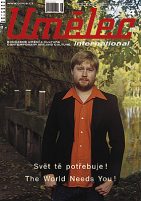
















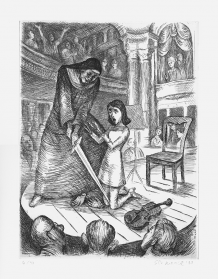




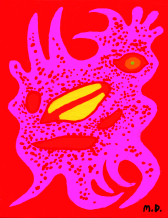
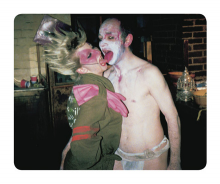

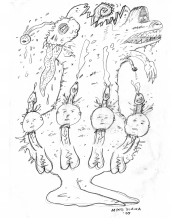


 Potsdamer Str. 161 | Neu Divus in Zwitschermaschine, galerie und buchhandlug in Berlin! | Mit U2 nach Bülowstraße
Potsdamer Str. 161 | Neu Divus in Zwitschermaschine, galerie und buchhandlug in Berlin! | Mit U2 nach Bülowstraße
Kommentar
Der Artikel ist bisher nicht kommentiert wordenNeuen Kommentar einfügen